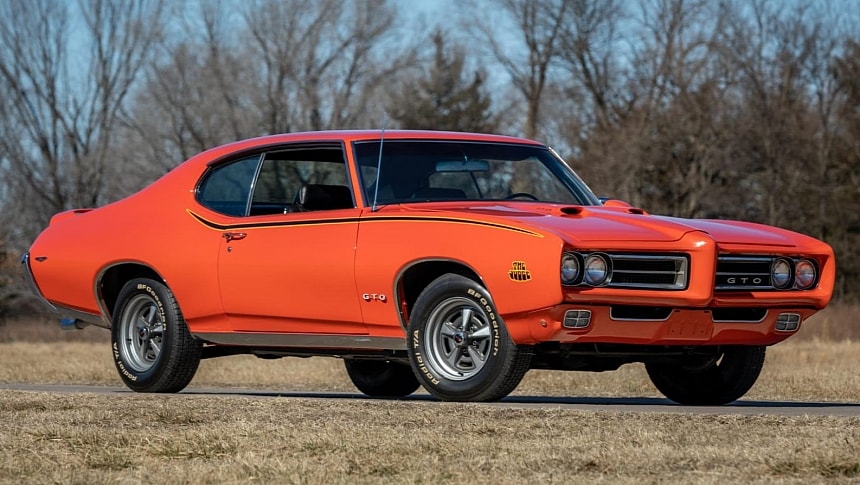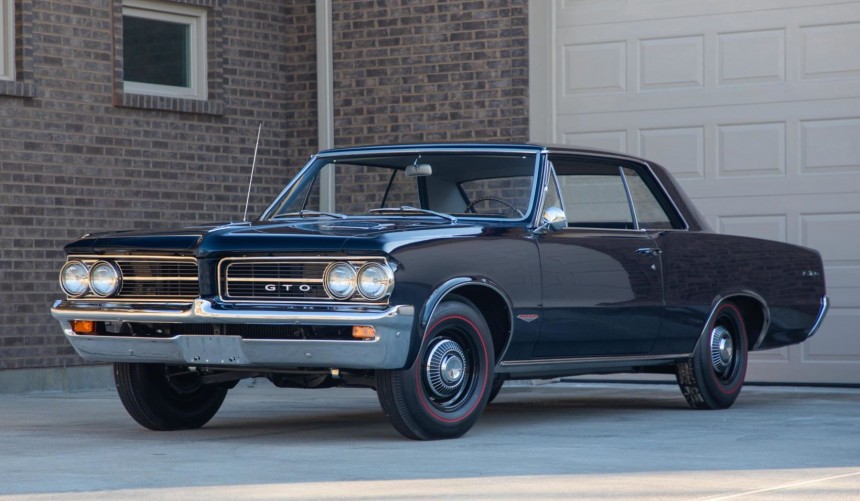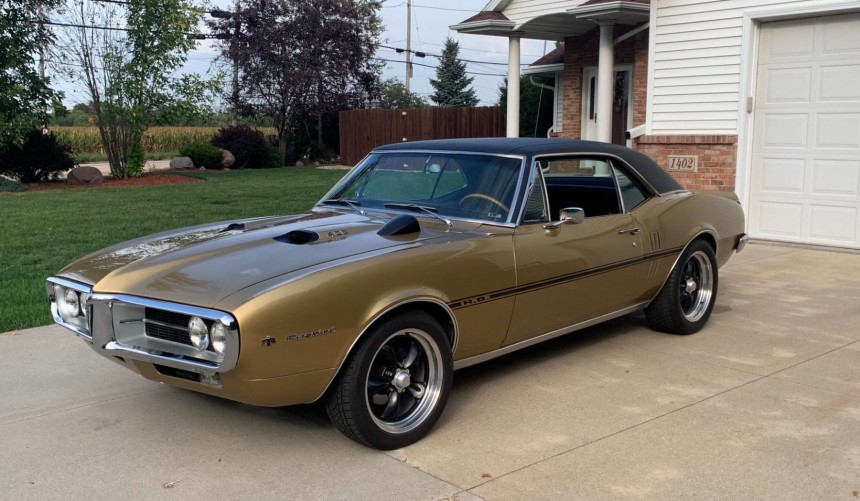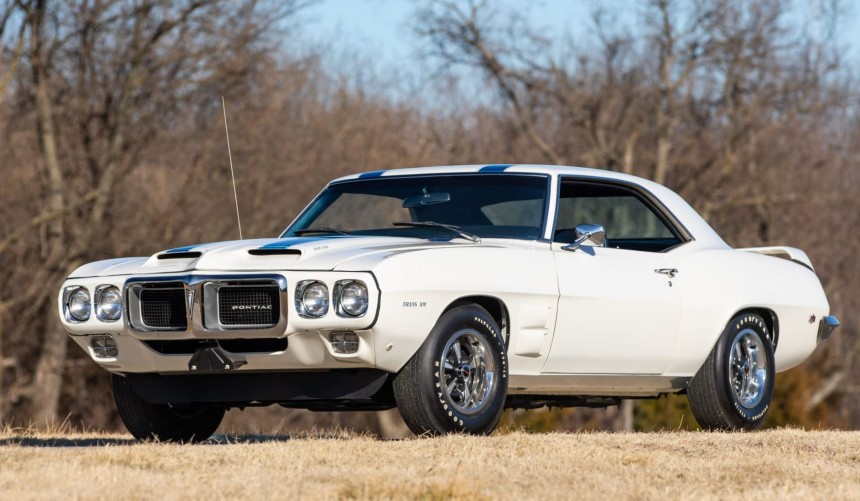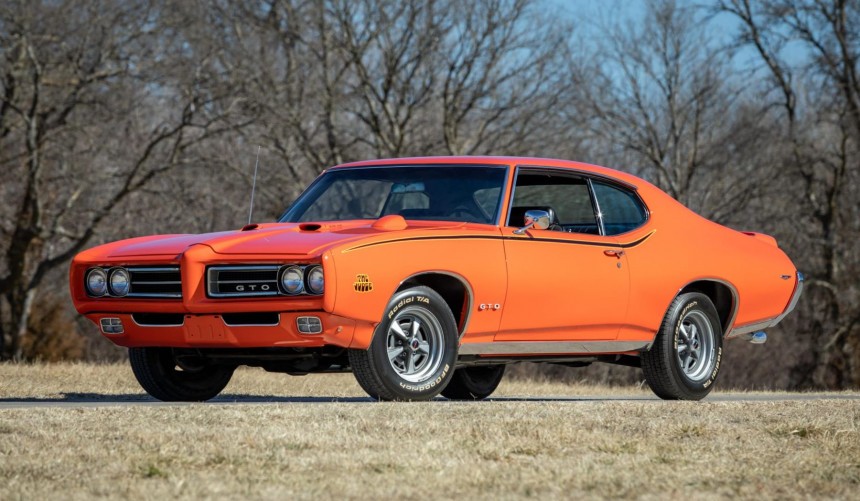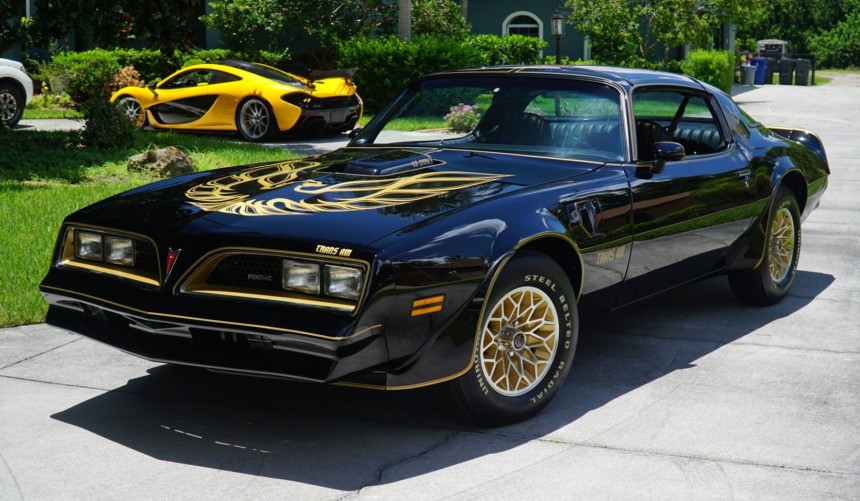Now defunct, Pontiac helped kick-start the muscle car phenomenon, and thanks to these five legendary models, the brand will live on in the hearts of performance enthusiasts.
Named after the Odawa chief who led an indigenous uprising around Detroit from 1763 to 1766, Pontiac was launched in 1926 as a companion make for GM's Oakland division.
In less than a decade, Pontiac models became far more popular than those marketed by Oakland, which, coupled with the economic turmoil of the Great Depression, led to the latter division's downfall.
Pontiac survived the Great Depression and steadily became one of GM's most profitable brands.
By the mid-1950s, the division's new general manager, Semon "Bunkie" Knudsen, along with bright young talent such as Pete Estes and John DeLorean, began reshaping Pontiac's image.
A few years later, Pontiac became GM's de-facto performance brand, and under the motto "We build excitement," it unleashed some of the most iconic models from the golden age of muscle cars.
Though it wasn't the first intermediate to feature a large-displacement engine borrowed from a full-size model, the GTO made this recipe truly popular, which is why many consider it the cornerstone of all things muscle and the most legendary Pontiac of them all.
Introduced in the fall of 1963 as a 1964 model, the GTO started out as a performance package for the all-new, second-generation Tempest-based LeMans.
Available as a coupé, hardtop, or convertible (all two-doors), the GTO came with many performance-oriented features as standard, including stiffer springs, a beefier front anti-roll bar, wider wheels with redline tires, and a scooped hood.
However, the standout standard feature was the 389 ci (6.4-liter) V8 equipped with chromed valve covers, a heavy-duty clutch fan, dual exhausts, and a single Carter AFB four-barrel carburetor.
Backed up by a three-speed manual (a four-speed manual and a two-speed automatic were optional), the potent V8 could deliver 325 hp.
Even more impressive, the GTO was available with an optional "Tri-Power" version of the 389, which, courtesy of three two-barrel Rochester 2G carburetors, produced 348 hp.
With this powerful engine under the hood, the GTO ran the quarter mile in 14.1 seconds at 104.16 mph (167.6 hp), making it the fastest factory-built muscle car of 1964 (according to Road & Track magazine).
General Motors arrived a bit late to the pony car party kicked off in 1964 by Ford's Mustang and Plymouth's Barracuda.
Nevertheless, when it did show up for the 1967 model year, the corporation introduced two of the most iconic pony cars of all time: the Chevrolet Camaro and Pontiac Firebird.
Though the Firebird was based on the same F-body platform and featured a body similar to its Chevy sibling, Pontiac went to great lengths to make it more appealing.
One of the ways it did that was to offer the Firebird in five distinct models. Of those, the most impressive was the Firebird 400, which took the model from pony to muscle car status.
Compared to the standard model, the 400 came with a multitude of performance-oriented upgrades and, as its name implied, was powered by a 400-ci (6.6-liter) L78 borrowed from the GTO.
With only a new throttle linkage, the engine renamed W66 was rated at 325 hp in 1967 and 330 hp a year later.
But that wasn't the most potent V8 enthusiasts could get on their 400s. For an extra $263 ($2,452 in 2024 money), the L67 Ram Air package, with its functional scoops and several engine upgrades, improved performance to 335 hp. Later in the 1968 model year, the package was replaced by the Ram Air II, which added five extra horses.
Though it wasn't the fastest nor the most potent first-generation Firebird, the 400 was the first high-performance version, which paved the way for the next entry on our list.
For enthusiasts, the Trans Am (a name borrowed from the racing series) is synonymous with the ultimate high-performance Firebird.
Inconspicuously introduced in March 1969 with no marketing campaign, the Trans Am was initially a performance and appearance package that yielded the most potent factory-built Firebird.
Only available Polar White with blue racing stripes, the Trans Am featured a series of exclusive exterior components like a redesigned hood with functional scoops, fiberglass air inlets mounted on the front fenders, and a rear spoiler.
Additionally, the package added a heavy-duty suspension with a one-inch front anti-roll bar, seven-inch wheels wrapped in wider tires, and a bespoke variable ratio power steering system - all of which dramatically improved handling.
Under its unique hood, the Trans Am came with a standard 335-bhp 400-ci (6.6-liter) L74 V8 from the Firebird 400. The 345-hp Ram Air IV was optional, but very few cars were equipped with it.
The 1969 Trans Am wasn't extremely popular, with only 689 hardtops and eight convertibles leaving the dealerships that year.
Nevertheless, the Trans Am became a separate model in the following years, and soon, it dethroned the GTO, becoming Pontiac's main high-performance model.
By 1968, the GTO was no longer the top dog among high-performance intermediates, so General Manager John DeLorean commissioned a special edition to boost sales.
The first prototype was conceived as a budget-friendly version of the GTO, but DeLorean wanted a premium, high-performance model. That led to a new prototype, which was approved for production and christened "The Judge" after the catchphrase "Here come 'Da Judge," made popular on Rowan & Martin's Laugh-In TV program.
Added to the second-generation GTO lineup for the 1969 model year, the Judge was a $332 ($2,869 in 2024 money) package for the hardtop or convertible.
Visual upgrades included a blackout grille, a rear-deck spoiler, two-tone pinstripes, and unique Judge decals.
Initially available only in Carousel Red (undeniably orange), the Judge came standard with the 366-hp D-port Ram Air 400-ci (6.6-liter) V8 paired with a Hurst-shifted three-speed manual.
Optional equipment included a four-speed manual or three-speed automatic, front disc brakes, power steering, a limited-slip differential, a hood-mounted tach, and, last but not least, a 370-hp Ram Air IV 400.
Though it wasn't the best-selling muscle car of 1969, the Judge served its purpose and revived interest in the GTO range.
The package returned for two additional model years, and today, it's one of the most sought-after Pontiac muscle cars ever built.
By 1977, the muscle car golden age was a distant memory. Iconic models that roamed the roads just seven years before were either discontinued or, like the Mustang, they had morphed into econocars.
Nevertheless, the second-generation Firebird was still in production, and it had just received a redesign that made it arguably the most aggressive-looking American available that year.
The Firebird's badass look was taken to another level with the introduction of the Special Edition package.
Available on the coupe and Hurst Hatch (T-top) Trans Am, the package brought a gorgeous black-and-gold paint job that included the now-legendary Screaming Chicken or, according to Pontiac's sales brochure, "the giant Firebird hood decal."
In terms of performance, the 1977 Trans Am (SE or not) came standard with a L78 400-ci (6.6-liter) V8 rated at 180 hp.
Next in line was an Oldsmobile-sourced 403 (6.6-liter) rated at 185 hp. This V8 made the engine lineup an alternative to the standard 400, which couldn't pass emission standards in high-altitude states and California.
Since the venerable 455 was discontinued at the end of the 1976 model year due to emission regulations, a "new" Pontiac 400 became the top-performing V8. Dubbed T/A 6.6, it made 200 hp courtesy of a tuned four-barrel Rochester Quadrajet carb.
While severely underpowered (but still competitive during the Malaise era), the 1977 Trans Am SE became a hit that revitalized Firebird sales, and today, it remains one of the most iconic muscle cars that Pontiac has ever built.
In less than a decade, Pontiac models became far more popular than those marketed by Oakland, which, coupled with the economic turmoil of the Great Depression, led to the latter division's downfall.
Pontiac survived the Great Depression and steadily became one of GM's most profitable brands.
By the mid-1950s, the division's new general manager, Semon "Bunkie" Knudsen, along with bright young talent such as Pete Estes and John DeLorean, began reshaping Pontiac's image.
A few years later, Pontiac became GM's de-facto performance brand, and under the motto "We build excitement," it unleashed some of the most iconic models from the golden age of muscle cars.
1964 Pontiac GTO
Introduced in the fall of 1963 as a 1964 model, the GTO started out as a performance package for the all-new, second-generation Tempest-based LeMans.
Available as a coupé, hardtop, or convertible (all two-doors), the GTO came with many performance-oriented features as standard, including stiffer springs, a beefier front anti-roll bar, wider wheels with redline tires, and a scooped hood.
However, the standout standard feature was the 389 ci (6.4-liter) V8 equipped with chromed valve covers, a heavy-duty clutch fan, dual exhausts, and a single Carter AFB four-barrel carburetor.
Backed up by a three-speed manual (a four-speed manual and a two-speed automatic were optional), the potent V8 could deliver 325 hp.
Even more impressive, the GTO was available with an optional "Tri-Power" version of the 389, which, courtesy of three two-barrel Rochester 2G carburetors, produced 348 hp.
With this powerful engine under the hood, the GTO ran the quarter mile in 14.1 seconds at 104.16 mph (167.6 hp), making it the fastest factory-built muscle car of 1964 (according to Road & Track magazine).
1967-1968 Pontiac Firebird 400
Nevertheless, when it did show up for the 1967 model year, the corporation introduced two of the most iconic pony cars of all time: the Chevrolet Camaro and Pontiac Firebird.
Though the Firebird was based on the same F-body platform and featured a body similar to its Chevy sibling, Pontiac went to great lengths to make it more appealing.
One of the ways it did that was to offer the Firebird in five distinct models. Of those, the most impressive was the Firebird 400, which took the model from pony to muscle car status.
Compared to the standard model, the 400 came with a multitude of performance-oriented upgrades and, as its name implied, was powered by a 400-ci (6.6-liter) L78 borrowed from the GTO.
With only a new throttle linkage, the engine renamed W66 was rated at 325 hp in 1967 and 330 hp a year later.
But that wasn't the most potent V8 enthusiasts could get on their 400s. For an extra $263 ($2,452 in 2024 money), the L67 Ram Air package, with its functional scoops and several engine upgrades, improved performance to 335 hp. Later in the 1968 model year, the package was replaced by the Ram Air II, which added five extra horses.
Though it wasn't the fastest nor the most potent first-generation Firebird, the 400 was the first high-performance version, which paved the way for the next entry on our list.
1969 Pontiac Trans Am
Inconspicuously introduced in March 1969 with no marketing campaign, the Trans Am was initially a performance and appearance package that yielded the most potent factory-built Firebird.
Only available Polar White with blue racing stripes, the Trans Am featured a series of exclusive exterior components like a redesigned hood with functional scoops, fiberglass air inlets mounted on the front fenders, and a rear spoiler.
Additionally, the package added a heavy-duty suspension with a one-inch front anti-roll bar, seven-inch wheels wrapped in wider tires, and a bespoke variable ratio power steering system - all of which dramatically improved handling.
Under its unique hood, the Trans Am came with a standard 335-bhp 400-ci (6.6-liter) L74 V8 from the Firebird 400. The 345-hp Ram Air IV was optional, but very few cars were equipped with it.
The 1969 Trans Am wasn't extremely popular, with only 689 hardtops and eight convertibles leaving the dealerships that year.
Nevertheless, the Trans Am became a separate model in the following years, and soon, it dethroned the GTO, becoming Pontiac's main high-performance model.
1969 Pontiac GTO "The Judge"
The first prototype was conceived as a budget-friendly version of the GTO, but DeLorean wanted a premium, high-performance model. That led to a new prototype, which was approved for production and christened "The Judge" after the catchphrase "Here come 'Da Judge," made popular on Rowan & Martin's Laugh-In TV program.
Added to the second-generation GTO lineup for the 1969 model year, the Judge was a $332 ($2,869 in 2024 money) package for the hardtop or convertible.
Visual upgrades included a blackout grille, a rear-deck spoiler, two-tone pinstripes, and unique Judge decals.
Initially available only in Carousel Red (undeniably orange), the Judge came standard with the 366-hp D-port Ram Air 400-ci (6.6-liter) V8 paired with a Hurst-shifted three-speed manual.
Optional equipment included a four-speed manual or three-speed automatic, front disc brakes, power steering, a limited-slip differential, a hood-mounted tach, and, last but not least, a 370-hp Ram Air IV 400.
Though it wasn't the best-selling muscle car of 1969, the Judge served its purpose and revived interest in the GTO range.
The package returned for two additional model years, and today, it's one of the most sought-after Pontiac muscle cars ever built.
1977 Pontiac Trans Am SE
Nevertheless, the second-generation Firebird was still in production, and it had just received a redesign that made it arguably the most aggressive-looking American available that year.
The Firebird's badass look was taken to another level with the introduction of the Special Edition package.
Available on the coupe and Hurst Hatch (T-top) Trans Am, the package brought a gorgeous black-and-gold paint job that included the now-legendary Screaming Chicken or, according to Pontiac's sales brochure, "the giant Firebird hood decal."
In terms of performance, the 1977 Trans Am (SE or not) came standard with a L78 400-ci (6.6-liter) V8 rated at 180 hp.
Next in line was an Oldsmobile-sourced 403 (6.6-liter) rated at 185 hp. This V8 made the engine lineup an alternative to the standard 400, which couldn't pass emission standards in high-altitude states and California.
Since the venerable 455 was discontinued at the end of the 1976 model year due to emission regulations, a "new" Pontiac 400 became the top-performing V8. Dubbed T/A 6.6, it made 200 hp courtesy of a tuned four-barrel Rochester Quadrajet carb.
While severely underpowered (but still competitive during the Malaise era), the 1977 Trans Am SE became a hit that revitalized Firebird sales, and today, it remains one of the most iconic muscle cars that Pontiac has ever built.
